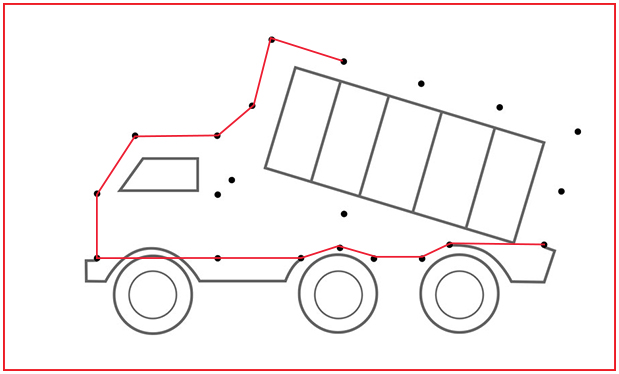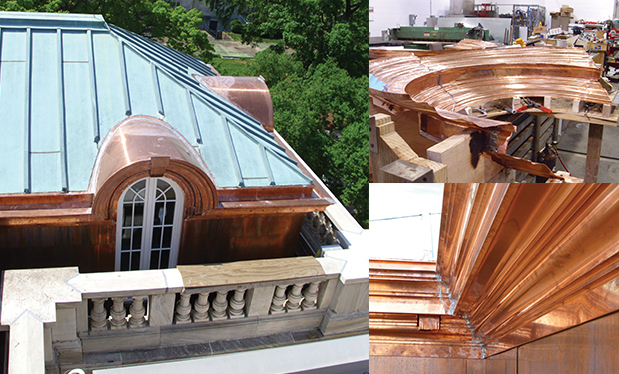Imagine the perfect roofing project. Your work is performed on time, under budget and without any workmanship issues. You submitted your pay applications every month, and the project owner diligently made payments within 30 to 45 days. The project closed without incident, and you received final payment, including payment of your retainage. You then find out the owner has filed for bankruptcy protection.
Six weeks later, you receive a letter from an attorney asking you to return the last three monthly payments you received from your customer. You think the attorney is crazy, but in an abundance of caution, you consult your counsel who explains the area of the law that allows for reclaiming of earned money. Your attorney explains you now are the subject of a preference claim.
What is it?
A preference claim arises in the context of a bankruptcy case. In the example, the owner filed for bankruptcy protection. The preference claim is made by the bankruptcy trustee to recover the debtor's assets for distribution to all creditors in accordance with applicable law. Preference claims must be brought within two years after a bankruptcy petition is filed or one year after the appointment or election of the first trustee, whichever occurs first.
A preference claim is defined as a debtor's transfer of interest in property to or for the benefit of a creditor. A preference claim arises because of a debt owed by the debtor before such a transfer was made. For a preference claim to be legitimate, the transfer had to have been made while the debtor was insolvent or within 90 days before the filing of a bankruptcy petition. In addition, the transfer must have enabled the creditor to receive more than it would have received if the case were a Chapter 7 liquidation proceeding. The trustee has the burden of proof on each of the elements of a preference claim.
The trustee's power to make a preference claim is intended to prevent a situation where creditors race to the courthouse to get a judgment against the debtor and then begin efforts to collect on the judgment, such as, for example, garnishing the debtor's bank accounts. Under the preference claim law, any money obtained by a creditor as a result of a lawsuit also is subject to a preference claim, resulting in the collected money having to be repaid to the trustee. For example, if the creditor successfully recovers money by garnishing the debtor's bank account, the funds received from the garnishment will need to be repaid to the debtor's estate.
The trustee's power to recover funds the debtor paid by way of a preference claim also facilitates equality of distribution of the debtor's assets among creditors. Put another way, the trustee's preference power helps avoid a situation where the debtor favors one creditor over others by paying only one creditor before slipping into bankruptcy.
A typical preference claim begins with a letter from the bankruptcy trustee, who may be an attorney. The letter explains the debtor has filed for bankruptcy and identifies those payments made to the creditor within the 90-day period predating the bankruptcy filing. The letter demands return of all payments and, in most instances, fails to inform the creditor there are defenses to the preference claim.
Defenses to preference claims
There are several defenses available in response to a preference claim, but there are three primary defenses that are most commonly raised by roofing contractors. These defenses are known as the subsequent new value, ordinary course of business and contemporaneous exchange defenses.
Subsequent new value
The subsequent new value defense is available to a roofing contractor who provided services to a debtor during or within the 90 days before a bankruptcy filing. This defense allows a roofing contractor to retain the money if the contractor gave new value to the debtor. New value may take the form of additional roofing labor, materials or equipment provided during or within the 90 days before the bankruptcy filing.
Consider a roofing contractor whose customer owns several buildings. The owner frequently needs roof system repair work at each building. As repairs are performed, the roofing contractor invoices the owner, and the owner pays the roofing contractor. The owner then suddenly files for bankruptcy protection. The roofing contractor next receives a preference claim letter from the bankruptcy trustee demanding the roofing contractor return those payments received by the roofing contractor within 90 days of the owner's bankruptcy filing. However, in this instance, within the 90 days before the owner filed for bankruptcy protection, the roofing contractor provided roof system repair services. This subsequent new value provided by the roofing contractor to the owner in the form of repairs may be available for the roofing contractor to offset the trustee's preference claim.
Whether the value of the repair services provided within 90 days of the owner's bankruptcy filing can be offset against the preference claim may depend on whether the roofing contractor was paid for those services.
The courts have adopted two approaches to this issue: a "remains unpaid" approach and "subsequent advance" approach. A majority view held by the courts is all new value provided during a preference period is available to offset the preference claim, regardless of whether the contractor received payment for the new value provided, as long as the payments made are subject to the preference claim. If those payments are unavoidable by the trustee because another defense applies, such as the ordinary course of business defense or the contemporaneous exchange defense, the new value is not available to offset the preference claim.
The minority view holds any new value provided during the preference period for which the contractor received payment is not available to offset the preference claim regardless of whether the payment is subject to the preference claim.
The extent of offset permitted also depends on where the bankruptcy case is filed. A majority view among the courts allows for offset against all prior advances that are part of the trustee's preference claim; the minority view only allows an offset against the most recent preference payment.
Ordinary course of business
The ordinary course of business defense requires a roofing contractor to prove the debt paid by the preferential payment arose in the ordinary course of the debtor's business. The defense also requires the roofing contractor to show either the transfer was made in the ordinary course of business or according to ordinary business terms.
In most cases, the first element of this defense, by itself, will make it difficult for a roofing contractor to defeat the preference claim. This is because most construction projects will not be considered in the ordinary course of the debtor's business but rather an extraordinary expense. This defense typically arises in preference claims where a trustee seeks to avoid payments made to trade vendors, such as utilities, suppliers and others who routinely provide the debtor with goods and services used in the course of the debtor's business. On the other hand, an ongoing roof system repair or maintenance agreement may provide the roofing contractor with the argument that the repairs and maintenance arise in the ordinary course of its customer's business.
A roofing contractor who successfully argues repairs and maintenance arise in the ordinary course of a customer's business must next prove that either the payment for the repairs or maintenance was made in the ordinary course of its customer's business or the transfer was made according to ordinary business terms. The analysis of both elements is fact-intensive and involves having to research the history of the parties' relationship, including how often invoices are submitted and how long it generally takes the customer to pay those invoices.
Whether payment was made in the ordinary course of business involves the roofing contractor having to establish a baseline of past practices. The bankruptcy court will look at the alleged preference payment against the baseline of past practices. Variables the court will consider include the payment amount, form of payment, time of payment, collection method or any other characteristic of the transfer that may differ from past practice.
For example, were previous payments included on one invoice while the alleged preference payment covered numerous invoices? Or did past practice involve payment by check but the alleged preference payment was made by wire transfer? Was a lawsuit filed to prompt payment? Often, the analysis comes down to comparing the practices during the pre-preference period and preference period.
The best evidence for the ordinary course of business defense is evidence that shows the alleged preference payment was consistent with past practices. For example, if past invoices were paid by the customer every 30 days, and the alleged preference payment also was paid within 30 days, the payment will not be subject to avoidance. On the other hand, if payments previously were made to the roofing contractor every 60 to 90 days from the date of the invoice, and the alleged preference payment was made fewer than 30 days from the date of the invoice, it is likely the payment will be subject to the trustee's avoidance powers.
If there is no transactional history and the first transaction is subject to a preference claim, the ordinary course of business defense can still be used. The defense will involve having to show the debt incurred by the customer was ordinary for the customer's business and the payments made toward that debt also were ordinary.
Whether a payment is made according to ordinary business terms steers away from an analysis of the parties' past practices and instead considers the nature of the industry and industry standards to determine whether the transfer is subject to the trustee's preference claim. A roofing contractor may be able to successfully prevail with the ordinary course of business defense by arguing an alleged preference payment was made within the time period and within construction industry standards.
What may be considered an obvious preferential payment in one industry may qualify as a payment made according to ordinary business terms in another industry. For example, through the use of expert testimony, which often is required when needing to prove whether a payment was made according to ordinary business terms, a roofing contractor may be able to successfully argue a payment received 60 days after the invoice date was made according to ordinary business terms in the construction industry.
Contemporaneous exchange
Proving the contemporaneous exchange defense involves proving an alleged preference payment was not for an existing debt but rather a contemporaneous exchange of new value for the payment. To prove this defense, the person alleged to have received the preference payment must show the parties intended the payment to be a contemporaneous exchange, the exchange was actually contemporaneous and the exchange was for new value.
The timing of the payment and the parties' intentions are important when analyzing the strength of the contemporaneous exchange defense. The strongest contemporaneous exchange defense involves payment at the time the service or goods are provided. For a roofing contractor, a strong contemporaneous exchange defense would have the roofing contractor paid, for example, for repairs as soon as they were completed and before the roofing workers left the premises.
If there is some delay between when the service was provided and payment was received, such as with a credit transaction, this does not mean the contemporaneous exchange defense is not available. In these instances, though the payment must be substantially contemporaneous with the provision of services, the parties' intent becomes particularly important. If payment will be delayed and the parties intend for there to be a contemporaneous exchange, the parties should prepare and execute an agreement that reflects the parties' intentions as it concerns contemporaneous exchanges. The agreement should reflect payment terms for the new value being provided, as well as how past-due amounts will be paid. Provided the payments are made within the payment terms as reflected in the parties' written agreement, the likelihood those payments will not be subject to a preference claim increases.
New value under the contemporaneous exchange defense may not necessarily involve providing roofing labor, materials or equipment. In some instances, the new value provided by the roofing contractor may take the form of a waiver of lien rights.
For example, say a roofing contractor is engaged as a subcontractor on a construction project and has not received payment. The roofing contractor either proceeds to record a claim of lien against the owner's property or threatens to do so. After the lien is recorded or the threat made, the owner either stops the general contractor's work at the project or threatens to make a direct payment to the lien claimant with the money being withheld from the general contractor's contract with the owner. The general contractor then pays the roofing contractor in exchange for the roofing contractor's lien cancellation or lien release, and within 90 days of the general contractor's payment to the subcontractor, the general contractor files for bankruptcy. Soon after the bankruptcy filing, the preference claim is made to recover the payment that was made in exchange for the lien cancellation or lien release.
In this instance, the roofing contractor may be able to defeat the preference claim by arguing its lien cancellation or lien waiver provided to the property owner added value to the general contractor. This argument involves having to show the general contractor, in this example, received at least equivalent value in exchange for its payment. When the property that is the subject of the lien belongs to a third party, it presents a challenge to show the general contractor received value in exchange for its payment. In this scenario, the roofing contractor can prove value through use of the indirect transfer doctrine.
The indirect transfer doctrine applies when a debtor's payment was in exchange for the creditor's waiving rights against a third party that induced the third party to provide value to the debtor. In the example, consider the roofing contractor's waiver of its rights against the project owner inducing the project owner to permit the general contractor to continue with its work and pay the general contractor without any offset for payments the owner would otherwise have made to the roofing contractor to avoid the lien claim. The roofing contractor would need to prove the general contractor's anticipated realization of value that resulted from the waiver or cancellation of lien rights was either equal to or exceeded the payment amount made to the roofing contractor.
If the cancellation or waiver was not provided, the owner would pay the claimant out of the funds it was holding from the general contractor. With the general contractor having paid the lien claimant, no funds will be withheld from the general contractor by the owner. On the other hand, if the amount of money the owner is withholding from the general contractor is less than the lien amount, the owner's payment to the roofing contractor would leave the owner with a claim against the general contractor for the difference between the lien claim and what the owner was withholding. The owner's unsecured claim against the general contractor simply is a substitute for the roofing contractor's claim for payment, revealing an absence of new value provided to the general contractor.
If the roofing contractor contracts directly with the owner and the owner files for bankruptcy, the question becomes whether the lien waiver or lien cancellation received by the owner is new value, which depends on whether there are prior encumbrances on the property and whether the owner has any equity in the property.
If the property already is encumbered and there is no equity to attach to the roofing contractor's lien, the owner is not receiving any new value when it receives the roofing contractor's lien cancellation or waiver. In this instance, the payment the roofing contractor received from the owner in exchange for the lien cancellation or lien waiver is subject to the trustee's preference claim. If there is equity in the owner's property, the roofing contractor's waiver of lien rights or cancellation of the lien provides value to the owner.
Construction trust fund statutes
If none of the defenses discussed apply to the preference claim being asserted, a roofing contractor may find relief under applicable state law. In states that have construction trust fund laws where funds received by a general contractor from an owner are deemed to be trust funds payable to subcontractors, a roofing contractor may be able to successfully argue the preference payment did not involve a transfer of the bankrupt general contractor's estate.
Proving the transfer involved property of the bankrupt general contractor's estate is an essential element of the trustee's preference claim. The argument presented in states with construction trust fund statutes is the funds were never property of the bankrupt general contractor, so the funds are not subject to a preference claim. The trustee, in these instances, attempts to prove its case by tracing the trust fund money and then showing the money was depleted at the time of payment to the roofing contractor. A trustee that is able to successfully show the trust funds were depleted at the time of payment will put the burden on the roofing contractor to prove another defense to the preference claim.
Knowledge is power
Now that you are aware of preference claims, you can take steps to avail yourself of a defense when suspicions arise that a customer is suffering from financial hardship. When there are no defenses available, the inevitable result is the law requires the return of hard-earned money, which, in most instances, will leave you with nothing more than an unsecured claim in a bankruptcy proceeding.
Philip Siegel is a partner with Atlanta-based law firm Hendrick, Phillips, Salzman & Flatt.



